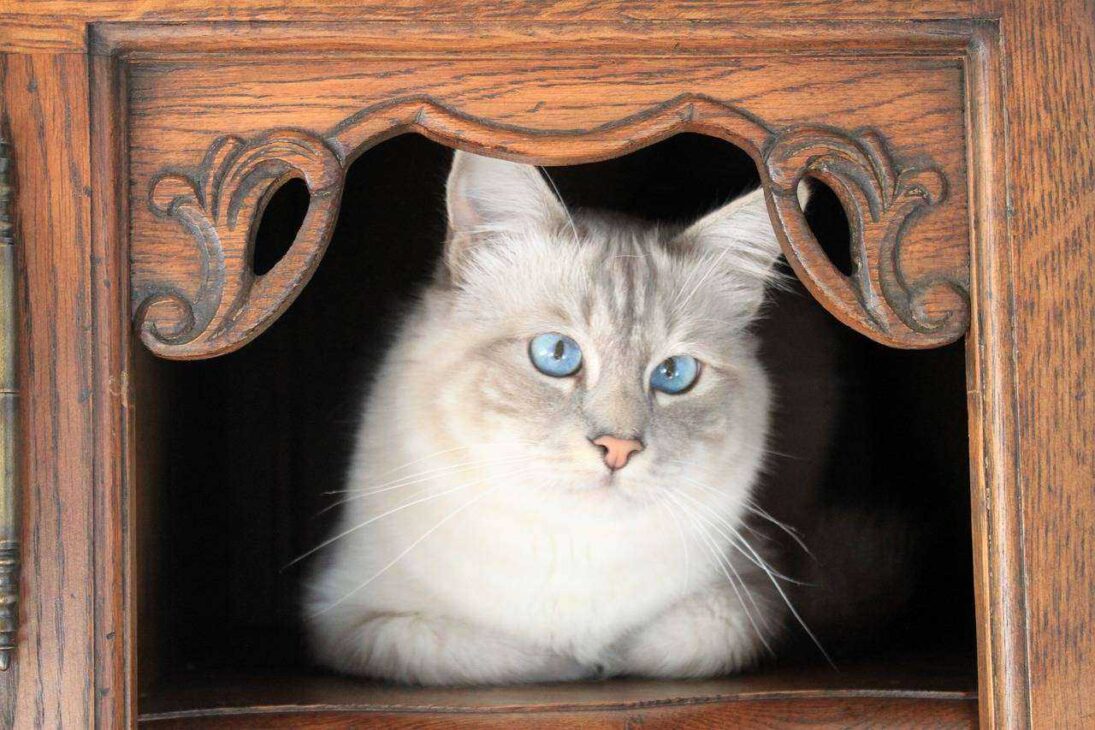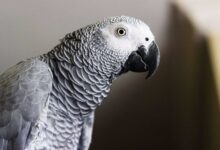Unlock Birman Magic: 5 Care Essentials for Your Feline Friend!

The Birman cat, a mesmerizing blend of elegance and grace, has captured the hearts of feline enthusiasts with its captivating blue eyes and luxurious coat. Originating from the mystical temples of ancient Burma, this revered breed is steeped in legend and revered for its gentle disposition. In this in-depth exploration, we embark on a journey to uncover the origins, delve into the distinctive characteristics, and provide comprehensive care insights for those enchanted by the enigmatic cat.
Table of contents
Origins of the Birman Cat
Myth and Legend of the Temple Cats
The sacred temples of Burma are shrouded in myth and mystery, with tales of revered temple cats serving as guardians of divine sanctuaries. Legend has it that their breed descended from these esteemed temple cats, revered for their role as protectors of sacred artifacts and symbols of good fortune. Birman Cat Club

The Legend of Sinh and the Miracle
One enduring legend recounts the tale of a temple cat named Sinh, whose act of selflessness and devotion led to the creation of the breed. According to legend, as Sinh stood guard over the temple’s golden goddess, he underwent a miraculous transformation, with his fur turning pure white and his eyes becoming a radiant blue, symbolizing purity and wisdom. CFA – Birman Breed
Historical Documentation and Introduction to the Western World
While the origins of the breed are steeped in legend, documented history traces back to the early 20th century. French explorers are credited with bringing the first pair of Birmans, Sita and Wong Mau, to France from Burma in the early 1900s, introducing the breed to the Western world. From their humble beginnings in French aristocratic circles, they gained recognition and popularity, eventually spreading to other parts of Europe and beyond. TICA – Birman Breed
Characteristics of the Breed
Distinctive Physical Attributes
They possess a striking colorpoint coat, characterized by a pale body adorned with darker points on the ears, face, legs, and tail. Their semi-longhaired coat is silky in texture, requiring regular grooming to maintain its lustrous appearance and prevent matting. The breed’s most captivating feature is its deep blue, almond-shaped eyes, which exude a sense of serenity and grace. Petfinder – Birman Breed
Temperament and Personality Traits
They are renowned for their gentle and affectionate nature, forming strong bonds with their human companions. They are sociable cats that thrive on companionship and enjoy spending time with their families, often seeking out affection and attention. Despite their regal appearance, They have a playful and curious disposition, displaying a youthful exuberance well into adulthood. Catster – Birman Cat
Care Essentials for Your Feline Friends

Grooming and Coat Care
Regular grooming is essential to keep their coat in optimal condition, preventing matting and tangles. Brush your cat coat at least two to three times a week, using a stainless steel comb or slicker brush to remove loose hair and distribute natural oils. Pay special attention to areas prone to matting, such as behind the ears and under the armpits, and gently detangle any knots to prevent discomfort. The Spruce Pets – Birman Cat Breed Profile
Nutritional Requirements
A balanced diet is crucial fo their health and well-being. Provide your cat with a well-balanced diet that meets their nutritional needs, with a focus on high-quality protein sources. Choose cat food formulated for their age, size, and activity level, and avoid overfeeding to maintain a healthy weight. Monitor your cat’s weight and adjust their diet accordingly to prevent obesity, which can lead to various health issues. Royal Canin – Birman Cat Breed
Environmental Enrichment and Mental Stimulation
They enjoy interactive toys and climbing structures. Provide a variety of toys, scratching posts, and interactive games to keep them entertained and engaged. Rotate toys regularly to prevent boredom and offer opportunities for exploration and play to satisfy their natural curiosity. Hill’s Pet – Birman Cat
Veterinary Care and Health Maintenance
Regular veterinary check-ups are vital for monitoring their health. Schedule annual wellness exams, vaccinations, and parasite prevention treatments as recommended by your veterinarian. Additionally, maintain good dental hygiene by brushing your cat’s teeth regularly and providing dental treats or toys to promote oral health. Vetwest – Birman Cat

Litter Box Hygiene and Management
Keeping litter boxes clean ensures your cat comfort. Scoop the litter box daily and replace the litter as needed. Provide multiple litter boxes in different locations throughout your home, especially in multi-cat households, to accommodate their preferences and prevent litter box aversion. Choose a litter that is unscented and clumping, they are sensitive to strong odors and textures. Vetstreet – Birman Cat
Hypoallergenic
They are often considered hypoallergenic by some individuals due to their low shedding and less dander-producing nature. Let’s delve into what makes their appealing to allergy sufferers and explore their unique characteristics.
Understanding Hypoallergenic Qualities
Low Shedding Coat
They have a semi-longhair coat that sheds minimally compared to other breeds. Their silky fur requires regular grooming but produces less dander, making them more tolerable for some allergy sufferers.
Reduced Fel d 1 Protein
While no cat breed is entirely hypoallergenic, They may produce less of the Fel d 1 protein, a common allergen found in cat saliva and skin glands. This reduced protein production can result in fewer allergic reactions in some individuals.
Care Tips for Allergy-Prone Individuals
Regular Grooming
Maintaining a grooming routine for your cat can help minimize shedding and reduce the spread of allergens. Brushing their coat regularly removes loose hair and dander, promoting a cleaner environment for allergy-sensitive individuals.

Allergen Control Measures
Implementing allergen control measures such as using air purifiers, vacuuming frequently, and washing bedding and surfaces can help reduce allergen exposure in your home, creating a more comfortable environment for both you and your cat.
Finding the Right Companion
Meet and Greet
Before bringing a cat into your home, spend time with individuals of the breed to assess your allergic reactions. Visit breeders or rescue organizations to interact with them and gauge your sensitivity to their fur and dander.
Consultation with Allergist
Consulting with an allergist before adopting a cat can provide valuable insights into managing your allergies effectively. They can offer personalized advice and recommendations based on your specific allergy triggers and sensitivities.
While no cat breed is entirely hypoallergenic, Birman cats’ low shedding coat and reduced Fel d 1 protein production make them a potential option for allergy-prone individuals. By understanding their unique qualities and implementing appropriate care measures, they can provide companionship to those who may have otherwise been unable to enjoy the presence of a feline friend.
Cats Health Issue
They are generally healthy cats with a lifespan of around 12 to 16 years. However, like all breeds, they can be prone to certain health issues. Some common health concerns that may affect include:

Hypertrophic Cardiomyopathy (HCM):
This is a heart disease that can affect cats of any breed, including Birmans. It causes the heart muscles to thicken, leading to inefficient pumping of blood. Regular veterinary check-ups can help in early detection.
Feline Infectious Peritonitis (FIP):
This is a viral disease caused by a coronavirus. While not specific breed, any cat can be affected. It’s a severe and often fatal disease, with no specific treatment. Keeping your cat indoors and avoiding contact with infected cats can help reduce the risk.
Polycystic Kidney Disease (PKD):
PKD is an inherited condition that causes cysts to form in the kidneys, eventually leading to kidney failure. Responsible breeders screen their breeding cats for PKD to minimize the risk of passing it on to offspring.
Gingivitis and Periodontal Disease:
Birmans, like many other breeds, can be prone to dental issues if their teeth are not properly cared for. Regular dental check-ups and teeth cleaning can help prevent gingivitis and periodontal disease.
Obesity:
They can be prone to obesity if they are overfed or not given enough exercise. Maintaining a healthy diet and providing regular opportunities for play and exercise can help prevent obesity-related health issues.
Respiratory Issues:
Some cats may be prone to respiratory issues, such as asthma or allergies. Environmental factors, such as dust or smoke, can exacerbate these conditions.
Regular veterinary check-ups, a balanced diet, plenty of exercise, and a safe indoor environment can help keep your cat healthy and happy. If you’re considering adding a cat to your family, make sure to choose a reputable breeder who prioritizes the health and well-being of cats.

Feline Friend
In conclusion, the feline friend stands as a testament to beauty, grace, and companionship, enchanting all who cross its path. From its mystical origins to its distinctive characteristics and essential care needs, their embodies the epitome of feline elegance and charm. By understanding and embracing the rich history, unique traits, and comprehensive care essentials of the breed, cat enthusiasts can embark on a rewarding journey filled with love, devotion, and cherished moments with their beloved feline companions.
FAQ
1. Are Birman cats hypoallergenic?
They are not considered hypoallergenic, but some allergy sufferers may tolerate them better than other breeds.
2. Do they shed a lot?
While they do shed, their semi-longhaired coat requires regular grooming to minimize shedding and prevent matting.
3. How long do they live?
They typically live between 12 to 16 years with proper care and nutrition.
4. Are cats good with children?
They are known for their gentle and sociable nature, making them great companions for families with children.
5. Do cats get along with other pets?
They are generally friendly and adaptable, often getting along well with other pets in the household.
6. Do they have any health issues?
While they are generally healthy, they may be prone to certain health conditions such as hypertrophic cardiomyopathy (HCM) and gingivitis.
7. How often should I groom my Birman cat?
They should be groomed at least two to three times a week to prevent matting and maintain their coat’s health and appearance.
8. What type of diet is best for cats?
A balanced diet consisting of high-quality cat food formulated for their age, size, and activity level is ideal for cats.
9. Do they require a lot of exercise?
While they enjoy playtime and mental stimulation, they do not require as much exercise as some other breeds.
10. Are they indoor or outdoor cats?
They are best kept indoors to protect them from potential dangers such as predators, traffic, and diseases.








